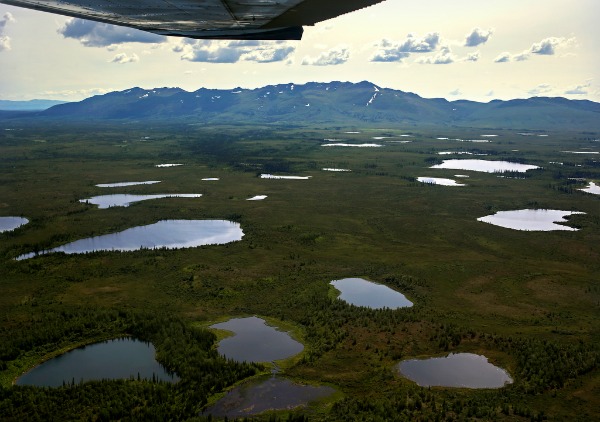Last week, a group of wildlife biologist wrapped up two weeks of loon surveys. Four airplanes, eight biologists and two contaminant specialists working with the National Park Service and the U.S. Fish & Wildlife Services surveyed Cape Krusenstern National Monument and nearby Bering Land Bridge National Preserve in an attempt to determine the population and habitat quality of Alaska’s red-throated and yellow-billed loon population.
We flew low – about 200 feet above the ground – and were lucky enough to see tons of wildlife. In addition to all five species of loons, we saw cygnets (young swans), goslings, moose, muskoxen, caribou, wolves, bears and foxes. We even saw a beluga whale off the coast. The weather was nice and the water was so clear that we could see the fish swimming in it. The flowers were in full bloom on the tundra – a couple of weeks early. Nearly all the snow has melted. All that was left was a few small patches under slough banks and in gullies.
NPS Photo/Emily Mesner
All five species of loons migrate to northwest Alaska in the summer to breed. The yellow-billed loon – the largest of the five loon species – only nests on the low, Arctic tundra near large, clear fish-filled lakes. They are easily distinguished from other loons by their black heads and large yellow or ivory bill. Like all loons, the yellow-billed loon is a diving bird and dives both to find fish and aquatic plants and to escape danger. It is one of the 10 rarest birds in North America, and very little is known about it. The worldwide population is only about 20,000 birds, 25% of which are in northwest Alaska.

